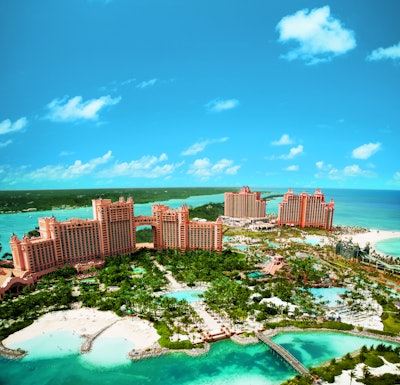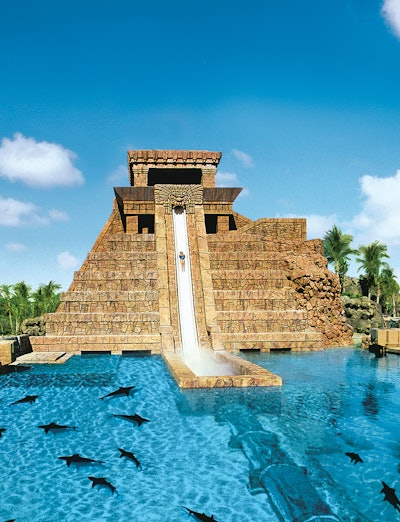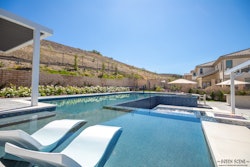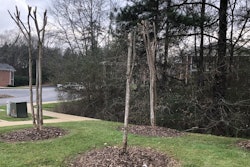 Photo: EDSA
Photo: EDSANow more than ever, customers are looking for landscape designs that are both visually appealing and immersive.
With this concept in mind, the landscape architecture firm EDSA, based in Fort Lauderdale, Florida, began exploring the idea of creating immersive theme park designs that would bring visitors in and truly help them get the full experience of the attractions.
Setting yourself apart
According to Gregg Sutton, principal, EDSA set itself apart from other landscape architecture firms in the area when they began expanding their project sites internationally.
“That kind of set the tone for us, and it set the tone also for us in the hospitality world,” says Sutton. “Our location is in south Florida, which has exploded in the last 60 years with development, entertainment, hotels and beachfront activities. That being said, I think it’s really helped us create our niche within the firm of landscape architecture.”
Jill Martinez, chief marketing officer, says that most of the projects EDSA works on are larger scale, master planning projects that allow them the opportunity to closely interact with customers to plan out every facet of their ideas.
 Aerial view of Atlantis, AQUAVENTURE, The Cove and The Reef.
Aerial view of Atlantis, AQUAVENTURE, The Cove and The Reef.Photo: EDSA
“We really work with clients to understand what responsible land development would look like, how many hotels can you put on it, how many residents should be on it, etc.,” says Martinez. “That large scale planning piece is unique, and there’s not a lot of firms out there doing that part of it.”
When the idea first came about for designing an immersive theme park experience, Sutton was sure EDSA was up to the task, as he says the firm has always been one that puts teams together well when working on projects that require a larger amount of infrastructure, numerous teams of architects, civil designs and more.
“We gained a lot of experience in developing entertainment theme-type designs in different parts of the world,” says Sutton. “We help clients tell that story to let customers know what all activities you can do when you come to their sites.”
Full immersion
According to Martinez, when you talk about creating an immersive experience, there are two sides to what that can mean. The first, she says, deals with themed environments, such as at Disney World or hotels that have themes throughout their grounds.
The second aspect, she says, is that the design needs to have an element of authenticity that speaks to the culture of the area. This element, she adds, needs to create a sense of place.
“I think all landscape architects listen to the land and feel that kind of stuff when they’re moving through and creating that whole sense of place,” says Martinez.
Sutton says EDSA ensures that every project worked on is unique. For them, there’s no such thing as the “cookie-cutter” approach, as each project is tailored to fit the individual needs, goals, budgets and expectations of the client.
To build immersive parks, Sutton says the teams start out with workshops, both on-site and at other projects that have similar attributes. Sutton says the process begins with brainstorming sessions, making lists of important attributes for the space, what the possibilities could be and whether or not there are any constraints.
 Photo: EDSA
Photo: EDSASutton notes that budget always plays a key role in planning, as you have to make sure you are creating something people can afford and sustain financially.
“You can put anything down on paper, but if it’s not going to be sustainable and able to be built, the construction’s not worth it,” says Sutton. “We always want creativity, but we also have to reel that into realistic budgets and timeframes.”
Along with keeping the financial state of the client in mind, Sutton says you also have to take into consideration the financial state of your client’s clients. It’s important to think about how these people will travel to get to the park, the types of people who will visit and once they are there, how will their experience be based on what you offer?
When the brainstorming sessions are completed, Sutton says it’s then time to move onto designing the spaces and determining what types of attractions and entertainment will be present, as well as what kind of story you want to tell.
“We’ve always known the value of an entertainment component, whether that’s been an upscale amenity package, adding a water park, a retail component or bringing food trucks in,” says Martinez. “It was really about keeping the guests on-site for a longer period of time to amplify their experience so that, ultimately, it is a revenue-producing venture for our clients.”
Rewarding experiences
For Sutton, one of the most rewarding projects he’s had the opportunity to work on was Bluewaters Island in Dubai. EDSA says this $1.6 billion mixed-use destination offers retail, residential, hospitality and entertainment zones, and it also features the Ain Dubai, the world’s largest observation wheel, as its centerpiece.
“It was an island that was created out in the Arabian Gulf, so just to see this all come to fruition is unbelievable, and it’s very rewarding to see your work come through and your clients be happy,” says Sutton. “It’s being celebrated in Dubai as a major attraction, and to know we were part of that is a big deal. As a designer, there’s nothing more satisfying than seeing your customers enjoy the final product. We draw plenty of pictures that may or may not get built, but the things that do are very rewarding.”
Along with creating projects that will make a lasting impact for the clients, Sutton and Martinez agree that it’s vitally important to remember that landscape architects are also global stewards of the environment.
Martinez says with all landscape architects know about natural resources, climate change and other big picture ideas, they should always try to come up with not only aesthetically pleasing designs but also those with resilient and positive suggestions.
“We’re never going to stop land development from happening and we’re never going to stop the world from moving forward, but to be able to have a positive impact on that, suggest alternatives that could also benefit the plant and society, that’s where we really see our role today and also into the future,” says Martinez.
 Photo: EDSA
Photo: EDSA










